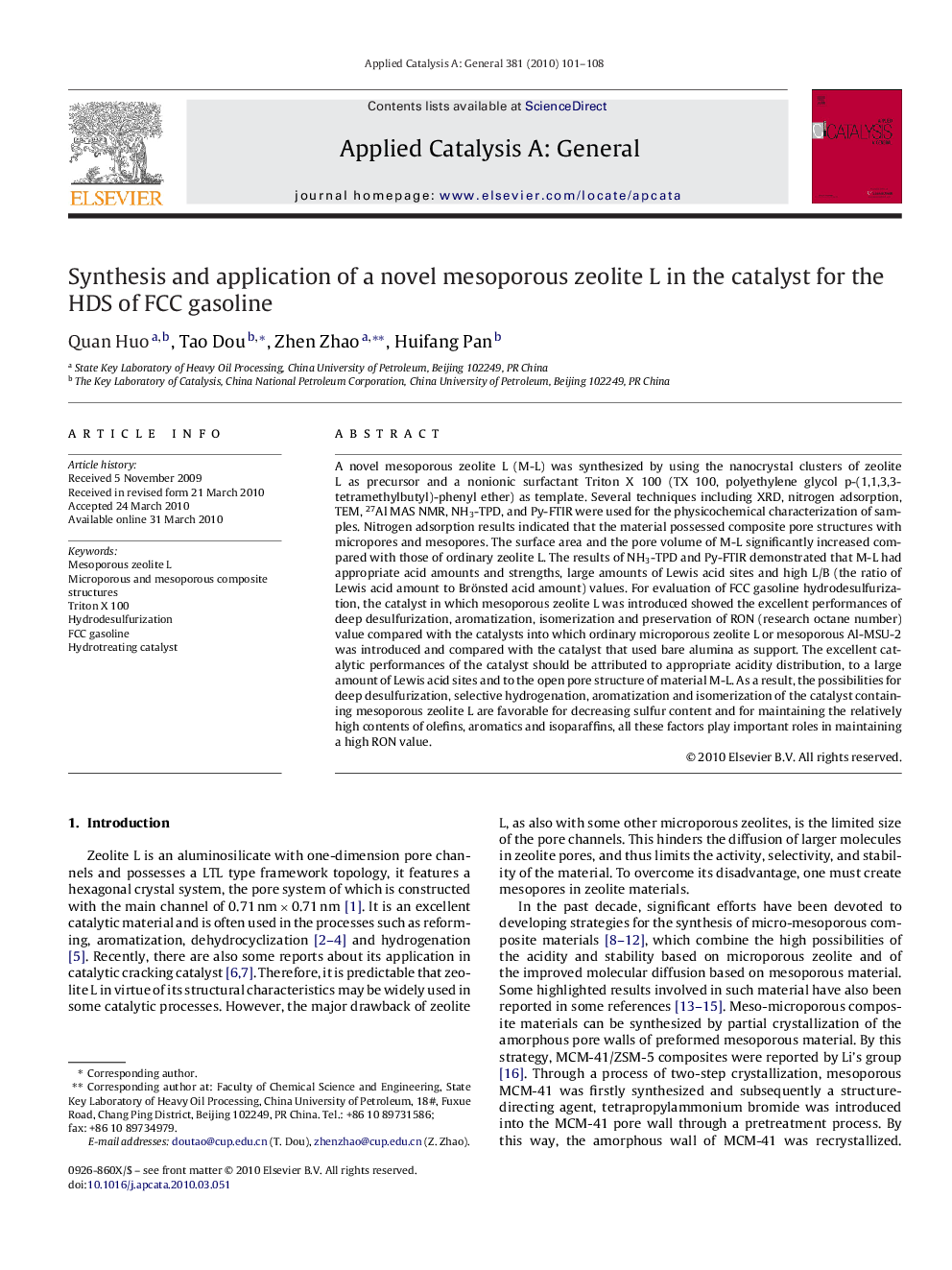| Article ID | Journal | Published Year | Pages | File Type |
|---|---|---|---|---|
| 42032 | Applied Catalysis A: General | 2010 | 8 Pages |
A novel mesoporous zeolite L (M-L) was synthesized by using the nanocrystal clusters of zeolite L as precursor and a nonionic surfactant Triton X 100 (TX 100, polyethylene glycol p-(1,1,3,3-tetramethylbutyl)-phenyl ether) as template. Several techniques including XRD, nitrogen adsorption, TEM, 27Al MAS NMR, NH3-TPD, and Py-FTIR were used for the physicochemical characterization of samples. Nitrogen adsorption results indicated that the material possessed composite pore structures with micropores and mesopores. The surface area and the pore volume of M-L significantly increased compared with those of ordinary zeolite L. The results of NH3-TPD and Py-FTIR demonstrated that M-L had appropriate acid amounts and strengths, large amounts of Lewis acid sites and high L/B (the ratio of Lewis acid amount to Brönsted acid amount) values. For evaluation of FCC gasoline hydrodesulfurization, the catalyst in which mesoporous zeolite L was introduced showed the excellent performances of deep desulfurization, aromatization, isomerization and preservation of RON (research octane number) value compared with the catalysts into which ordinary microporous zeolite L or mesoporous Al-MSU-2 was introduced and compared with the catalyst that used bare alumina as support. The excellent catalytic performances of the catalyst should be attributed to appropriate acidity distribution, to a large amount of Lewis acid sites and to the open pore structure of material M-L. As a result, the possibilities for deep desulfurization, selective hydrogenation, aromatization and isomerization of the catalyst containing mesoporous zeolite L are favorable for decreasing sulfur content and for maintaining the relatively high contents of olefins, aromatics and isoparaffins, all these factors play important roles in maintaining a high RON value.
Graphical abstractA novel mesoporous zeolite L was synthesized by the self-assembly of zeolite L nanocrystal clusters in the presence of template Triton X 100. The catalyst into which such material was introduced showed excellent hydrodesulfurization and preserved RON performances compared with the catalysts into which microporous zeolite L or mesoporous Al-MSU-2 was introduced and compared with the catalyst that used bare alumina as support for full-range FCC gasoline hydrodesulfurization.Figure optionsDownload full-size imageDownload high-quality image (105 K)Download as PowerPoint slide
